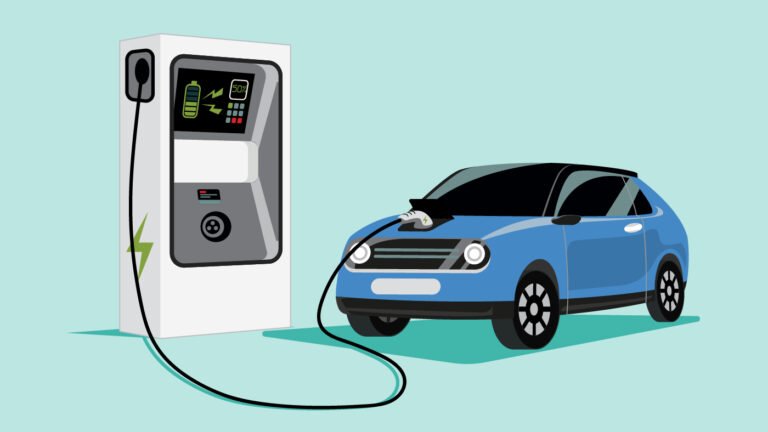Electric vehicles are becoming more popular each year, and it’s no surprise why. They’re environmentally friendly, economical, and fun to drive. But what you may not know is that electric vehicles can also be helpful in disaster recovery situations.
Nissan has been using electric vehicles for this purpose for years, and they’ve learned a lot about how to use them effectively. Here are some of the ways that Nissan is using electric vehicles for disaster relief and what you can learn from their experience.
What is Nissan’s electric vehicle program, and how does it work?
Nissan’s electric vehicle program is a critical part of the company’s commitment to reducing its environmental impact. The program, along with the help of Nissan financing, helps to reduce emissions and improve fuel economy by using electric vehicles instead of gasoline-powered cars. Nissan has been a leader in the development of electric vehicles, and the program has already had a major impact on the company’s bottom line.
In addition to reducing emissions, the program also helps to improve Nissan’s brand image and attract new customers. The program works by providing incentives for customers to purchase electric vehicles.
These incentives include tax breaks, free charging stations, and access to exclusive events. The program has been highly successful, and Nissan is confident that it will continue to be a key part of the company’s future.
How have electric vehicles been used in disaster recovery situations in the past?
In the wake of a disaster, one of the most pressing concerns is often how to maintain a reliable power supply. This can be especially difficult in areas where the infrastructure has been damaged or destroyed.
Nissan’s Blue Switch project is designed to help meet this need by harnessing the power stored in car batteries. The system uses a special adapter to connect the battery to an external power source, such as a generator.
This allows people to use the battery power to run essential equipment, like lights and medical devices. The project is still in its early stages, but it has the potential to provide much-needed assistance in the aftermath of a disaster.
What are some of the benefits of using electric vehicles for disaster recovery situations?
The Nissan Leaf is Nissan’s primary EV that has been used for disaster relief purposes. They have a number of advantages that make them ideal for disaster recovery situations.
- EVs emit no pollutants, which is important in areas where air quality is already compromised.
- EVs are very quiet, so they can be used in areas where noise levels are already high.
- EVs have a much smaller environmental footprint than gas-powered vehicles, which is important in areas where resources are scarce.
- They can be plugged into the grid to recharge, so they can be used even in areas where power is out.
Electric vehicles offer a number of benefits that make them ideal for disaster recovery situations.
How has Nissan’s electric vehicle program evolved over the years, and what changes have been made to it specifically for disaster relief efforts?
Nissan’s electric vehicle program began in the early 1990s as a way to reduce emissions and reliance on fossil fuels. The first generation of Nissan EVs was based on the premise of using clean, renewable energy to power transportation and began in 1947 with the creation of the Nissan Tama.
However, as battery technology improved and the cost of EVs began to fall, Nissan saw an opportunity to expand its EV program to include disaster relief efforts. In particular, the company developed a mobile EV charging station that could be used in areas affected by natural disasters.
The station was designed to be easily transported and set up, and it could provide power for a variety of EVs. Nissan also worked with the Japanese Red Cross to develop a fleet of EV ambulances, which have been used extensively in disaster zones.
More recently, Nissan has partnered with the United Nations Development Programme to provide EV charging stations in developing countries. These stations are intended to help offset carbon emissions and provide clean, reliable power for communities that may not otherwise have access to it.
Through its EV program, Nissan has demonstrated a commitment to innovation and sustainability, two values that are essential to disaster relief efforts.
What are some of the challenges that Nissan faces when implementing its electric vehicle program for disaster relief efforts, and how does it overcome them? “
Nissan is a Japanese car company that has been working on developing electric vehicles (EVs) for many years. The company has now decided to use these EVs in disaster relief efforts, but there are some challenges that Nissan faces when implementing this program.
One challenge is that electric vehicles require a lot of infrastructure, such as charging stations. This infrastructure is not always available in disaster-affected areas. Another challenge is that EVs can be more expensive than traditional gasoline or diesel cars. This means that it can be difficult to get people to switch to EVs, even in the midst of a disaster.
Nissan is working to overcome these challenges by partnering with governments and NGOs to help build the necessary infrastructure and by providing discounts on EVs for people affected by disasters.
The company is also working to raise awareness about the benefits of EVs so that more people will be willing to switch to them. By overcoming these challenges, Nissan will be able to make a real difference in the lives of those affected by disasters.
Nissan’s electric vehicle program has been underway for many years and continues to evolve. It has been used in disaster relief efforts in the past, and offers many benefits. Nissan faces some challenges when implementing its electric vehicle program for disaster relief efforts, but it overcomes them.
